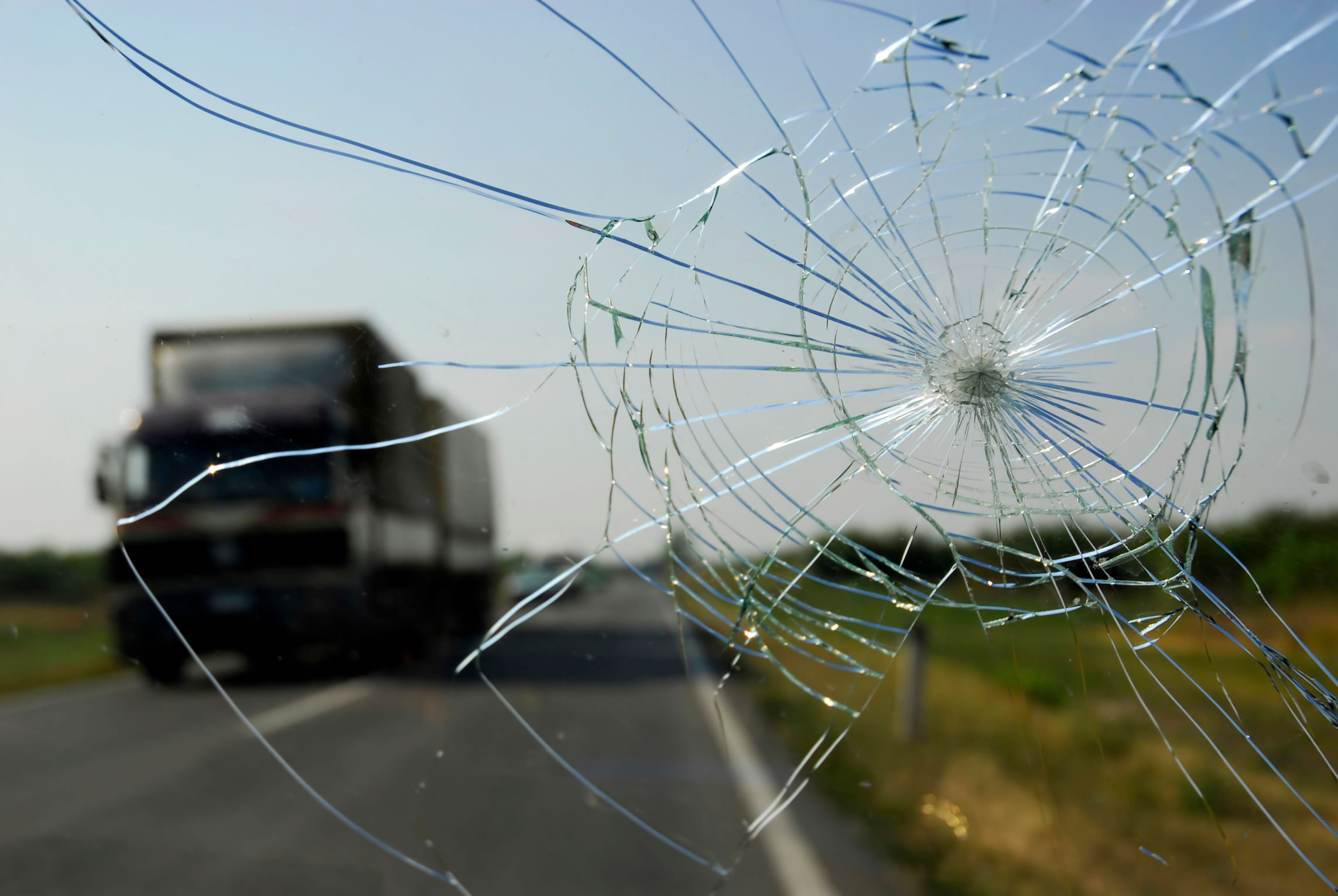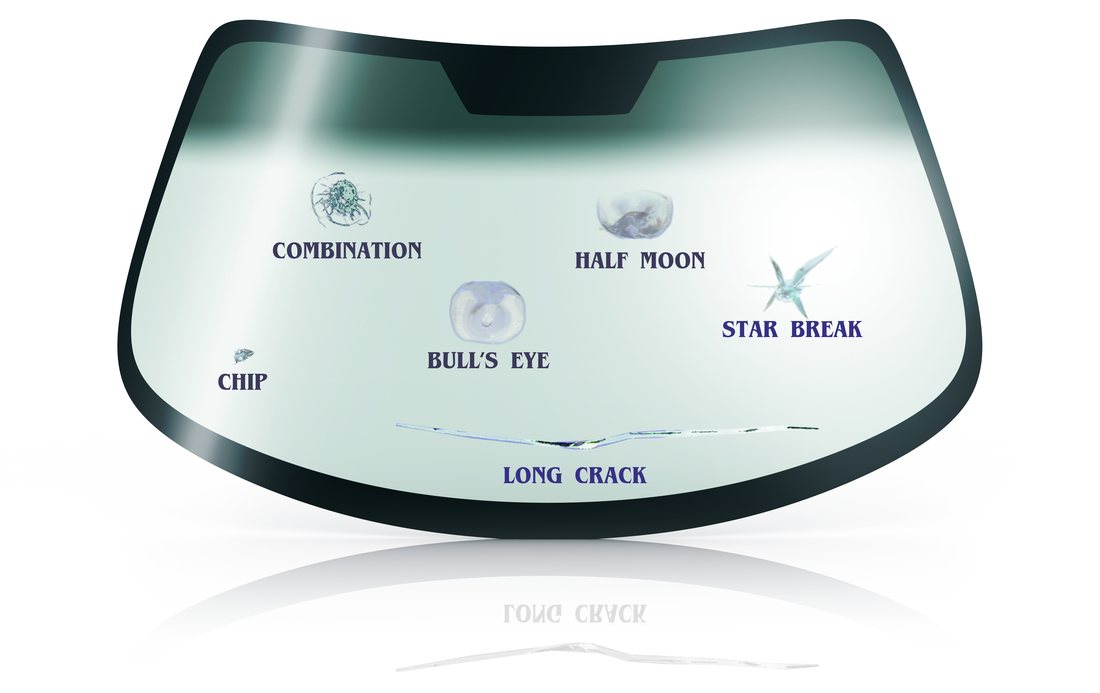Aug 2017
Windshield Chips and Cracks

You’re driving down the road and notice a little blemish on your windshield. Unfortunately it’s not the remnants of an unfortunate insect, but instead, a small chip. It’s only the size of a pea, so it can be very easy to just forget about this and continue on your way. But as with anything in the automotive world, a small issue can quickly turn into a much larger problem.
And for those of us that live in the north…winter is coming. And with it comes tumbling chunks of salt, flying shards of ice, and water that tends to freeze and expand. This results in a recipe for disaster if your windshield has any small chips or cracks.
So now that you’ve noticed this issue, what do you do about it? If you treat the chip early enough, it should be repairable. But there are many factors that come into play when determining whether or not the damage is repairable. We take a look at some of the different types of cracks and chips as well as how to determine what options you have.
Type
While the type of damage is categorized as either a chip or a crack, there’s no shortage of subcategories. Cracks are pretty self-explanatory in that they form as a distinct horizontal line that can range anywhere from an inch to the entire width of the windshield. These are usually more serious than chips and can quickly expand and become a larger issue if left untreated.
Chips, on the other hand, can take many different forms. Some of the most common types of chips include the star break, bulls-eye, partial bulls-eye, half moon, pit, and crack chip. No matter which type you’re dealing with, it’s important to fix the issue before it can expand into a crack.

Size and Depth
These are two of the most important factors in determining whether or not the crack or chip can be repaired. A general rule of thumb is that if the crack is longer than a dollar bill, it’s too long to be repaired and the entire windshield will need to be replaced. Keeping with the monetary theme, most chips that can be covered by a quarter can be repaired.
Safelite AutoGlass® has a few other criteria that need to be met in order for the windshield to be eligible for repair over replacement. The crack or chip cannot be on the edge of the windshield, there must be less than three chips, the damage cannot be in the line of sight, and damage must be able to fit under a quarter(dollar bill for a crack).
Location
The location alone can determine whether or not a crack is repairable. Any crack or chip near or on the edge poses a much greater threat to the integrity of the windshield. This presents a large safety threat and will more than likely result in the windshield needing to be replaced. Also, as noted above, if the issue is in the driver’s line of sight, it will typically prevent a repair from being possible.
End Result
While the major factors of this process are out of your hands, the location and size of the chip, you do control the timing. And with an issue like this, timing really can be everything. The longer you wait, the more likely that the issue will expand and reach the unrepairable level.
When considering the average costs associated with each type of fix, it’s obvious why you want to diagnose the issue immediately. The average chip repair costs in the area of $80, while the average windshield replacement will set you back $400 or more. And although not all chips will be repairable, it’s worth your time to take into account the criteria noted above and to determine your course of action, as long as you don’t delay in doing so.



